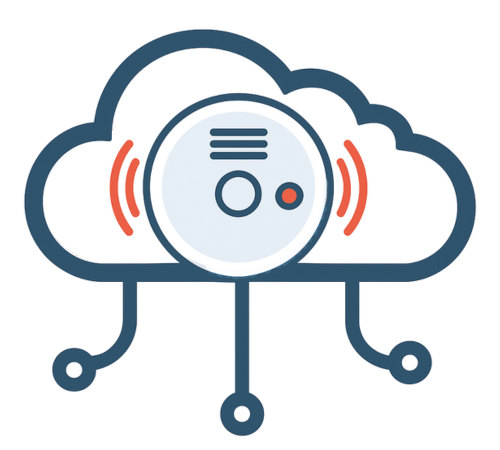
Misconfigurations are the fire hazards of the cloud. Cloud Security Posture Management (CSPM) detects risks early and strengthens transparency and security.

Cloud computing has become the backbone of modern IT – powering data processing, collaboration, and even entire business applications. But this flexibility and scalability come at a cost: with every new resource and permission, the attack surface grows. Many cloud security incidents can be traced back to surprisingly simple causes: a misconfigured permission, an unencrypted storage bucket, or a forgotten test environment left exposed.
Cloud Security Posture Management (CSPM) addresses exactly this risk. It provides visibility into your cloud environments, continuously checks for security and compliance violations, and helps fix issues before they escalate into incidents. With the speed and complexity of today’s cloud, manual processes can’t keep up – making CSPM an essential part of any security strategy. In this article, we explain what CSPM is, its core functions and processes, how to implement it in five phases, and what lessons companies should learn from real-world practice.
CSPM is a security approach that continuously monitors cloud environments for misconfigurations, policy violations, and security risks, while assessing overall risk exposure. It builds on established standards, frameworks, regulatory requirements, and company-specific policies.
A key part of CSPM is the underlying process layer – prevention, detection, response, and continuous improvement – ensuring that security measures are applied consistently over time.
CSPM combines technical capabilities with cross-functional processes that ensure risks are not only detected but also addressed sustainably.
The core functions of CSPM lay the foundation for transparency and security in cloud environments.
CSPM processes align closely with the NIST CSF domains Identify, Protect, Detect, Respond. They ensure that the technical findings of CSPM are translated into concrete security measures and have a lasting impact.
Rolling out CSPM is not just a technology project, it’s an ongoing process that links transparency, analysis, and execution. A phased approach has proven effective:
Phase 1: Initialization
Start with a full analysis of your cloud environment. Identify and document all services in use, and take stock of existing security tools. Many organizations already use solutions such as Microsoft Defender for Cloud, which include certain CSPM features. These need to be considered to avoid duplication and make optimal use of existing capabilities.
At the same time, determine which systems need to be integrated into CSPM – for example, those relevant for interfaces, automation, or the forwarding of findings.
Result: Transparency across all deployed cloud services and existing security tools, and clarity on their role within the CSPM framework.
Phase 2: Defining a security baseline
In this phase, the company’s existing security requirements are recorded and supplemented with leading standards such as CIS Benchmarks. Together, they form the security baseline, which serves as a reference for all future security and compliance checks.
Result: A clearly defined cloud security baseline that combines internal requirements with established best practices.
Phase 3: Technical implementation & integration
The baseline is now technically implemented and, if necessary, integrated into existing DevSecOps processes. Additional solutions may be evaluated and integrated as required. A key step is automation: technical policies can, for example, be centrally managed and rolled out via a CI/CD pipeline, ensuring consistency and scalability.
Result: Implementation of the baseline, integration into existing security solutions, and first steps toward automation.
Phase 4: Process definition & integration
For CSPM to have real operational impact, clear processes are needed. Along dimensions such asIdentify, Protect, Detect, and Respond, workflows are defined so that findings from CSPM are directly translated into concrete security measures.
Result: Established security processes that transform CSPM data into operational actions.
CSPM is not a one-time project but an ongoing process. New requirements, best practices, and technologies must be regularly incorporated into the baseline. Automation and reporting functions are also continuously optimized, further increasing the effectiveness of cloud security.
Result: A CSPM program that continuously evolves and improves.
In theory, the introduction of CSPM sounds clear and structured. In practice, however, success depends on many factors. Our experience has yielded eight key takeaways:
CSPM is much more than just a dashboard with colourful traffic lights and diagrams. It creates transparency, translates findings into concrete process steps, automates measures, and anchors security in the organization in the long term. This makes it a continuous security and compliance monitor that reflects the dynamic nature of modern cloud environments.
However, practice shows that the success of CSPM depends both on reliable technology and on the interaction with clearly defined processes and pragmatic implementation. A clear set of rules, a realistic security baseline that is gradually developed, and close integration into existing organizational processes are crucial. Equally important is broad expertise – from architecture and automation to governance – and a critical eye on manufacturer promises, which often fail to be fully delivered.
Companies that want to seriously protect their cloud landscape cannot do without CSPM. Without this protection, small configuration errors can escalate unnoticed into major security incidents.
Rely on CSPM now: your early warning system for the cloud that sounds the alarm before security gaps “catch fire”.

